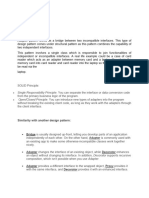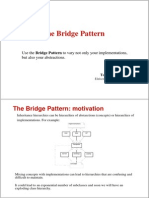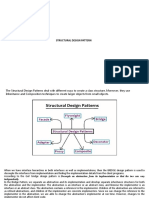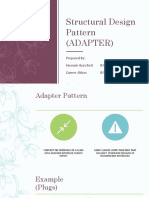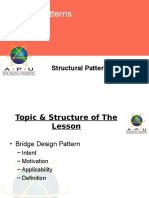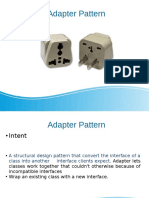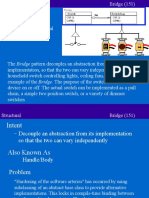0% found this document useful (0 votes)
62 views14 pagesDesign Patterns After Mid
The adapter pattern converts the interface of one class into another interface that a client expects, allowing classes with incompatible interfaces to work together. It has four components: a target interface, a client, an adaptee with an incompatible interface, and an adapter that connects them. The bridge pattern decouples an abstraction from its implementation so they can vary independently. It has an abstraction class, refined abstractions, an implementation interface, and concrete implementations.
Uploaded by
Ayesha AshrafCopyright
© © All Rights Reserved
We take content rights seriously. If you suspect this is your content, claim it here.
Available Formats
Download as PPTX, PDF, TXT or read online on Scribd
0% found this document useful (0 votes)
62 views14 pagesDesign Patterns After Mid
The adapter pattern converts the interface of one class into another interface that a client expects, allowing classes with incompatible interfaces to work together. It has four components: a target interface, a client, an adaptee with an incompatible interface, and an adapter that connects them. The bridge pattern decouples an abstraction from its implementation so they can vary independently. It has an abstraction class, refined abstractions, an implementation interface, and concrete implementations.
Uploaded by
Ayesha AshrafCopyright
© © All Rights Reserved
We take content rights seriously. If you suspect this is your content, claim it here.
Available Formats
Download as PPTX, PDF, TXT or read online on Scribd
/ 14






